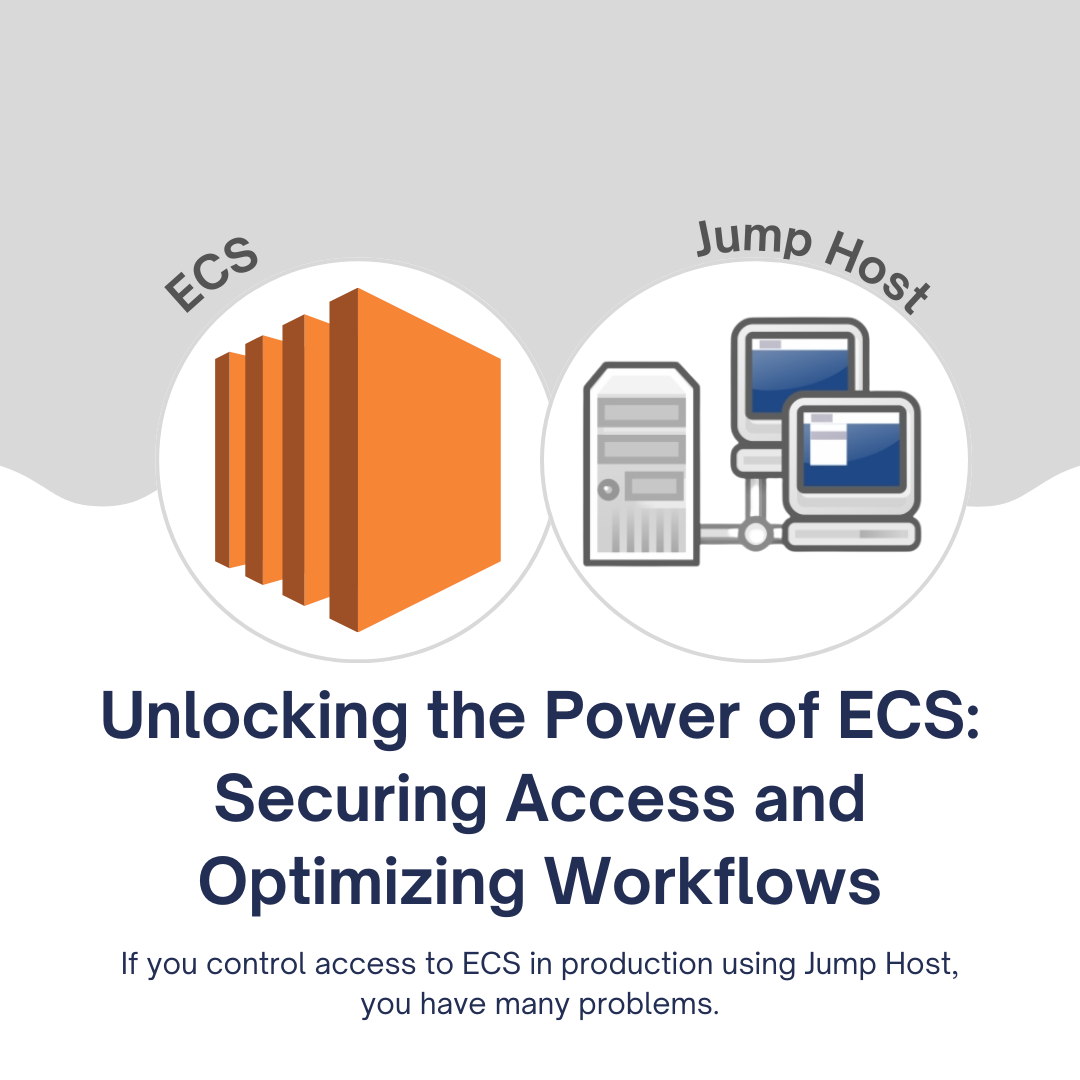Unlocking the Power of ECS: Securing Access and Optimizing Workflows

ntroduction
When it comes to managing access to Amazon Elastic Container Service (ECS) in a production environment, organizations face numerous challenges. In this article, we will delve into the five major issues that arise when using Jump Host for ECS access, explore their implications, and provide practical solutions to mitigate their impact. Fast and secure access to ECS is crucial for ensuring efficient product development, troubleshooting, bug fixes, and incident resolutions. However, many teams struggle with suboptimal access solutions that can jeopardize security and hinder productivity.
Step 1: Identify the Hidden Vulnerabilities
One of the first steps in addressing ECS access issues is recognizing the vulnerabilities that often go unnoticed but pose significant risks:
- Single Sign-on (SSO) & Multi-Factor Authentication (MFA): Insufficient SSO and MFA measures can compromise security by allowing unauthorized access.
- Audit Trials and PII Protection: Inadequate audit trials and personal identifiable information (PII) protection can lead to compliance violations and data breaches.
- Compliance Requirements: ECS access must adhere to industry-specific compliance standards such as GDPR, PCI, SOC2, and HIPAA.
- Developer Experience: A poor user experience can lead to inefficiencies and decreased productivity.
Step 2: Implement the 80/20 Rule
To address these vulnerabilities, organizations can take a phased approach:
a. Add ECS to Existing Systems:
Utilize systems you already have in place, such as Google Workspaces, to streamline ECS access. Consider the following:
- Integrate SSO: Implement SSO to simplify access management.
- Session Recording: Explore tools like Cloud Shell solutions from AWS/Google Cloud or Runops for session recording.
- Prioritize Google OAuth: Choose Google OAuth for SSO and MFA over LDAP for faster implementation.
b. Prioritize Features According to Industry:
Tailor your ECS access strategy to your industry's specific needs:
- Developer-Centric Industries: Focus on improving developer experience, SSO, and MFA. Simplify the access process to reduce the number of steps.
- Regulated Industries (e.g., Fintechs): Prioritize compliance requirements like PCI and audit trials, even if it means a more complex access process initially.
Step 3: Consolidate Access Solutions
Managing multiple tools for various access needs can lead to complexity. Consider consolidating access solutions:
- Unified Access Management: Use a single tool to manage access to ECS, AWS/GCP, databases, Kubernetes, servers, and other resources. This approach reduces complexity and streamlines access control.
Step 4: Add Friction to Unwanted Access Methods
To deter the use of insecure or non-compliant access methods, introduce friction to encourage the preferred method:
- Implement Form Submissions: Require engineers to submit forms to access ECS, making it less convenient than alternative, insecure methods.
- Jira Requests for Console Access: If AWS web console access is a concern, put it behind a Jira request to discourage its use. Over time, enhance the preferred method to make it more appealing than the console.
By adding complexity to undesired access methods, organizations can steer users toward the secure and compliant ECS access approach.
Conclusion
Addressing the hidden vulnerabilities of ECS access is essential for ensuring security, compliance, and efficient workflows. By following these four steps, organizations can enhance their ECS access management, streamline processes, and reduce security risks. Prioritizing the right features, leveraging existing tools, and consolidating access solutions can lead to a more secure and user-friendly ECS access experience.
